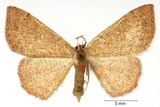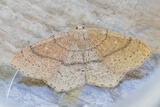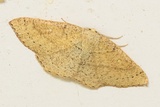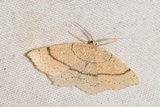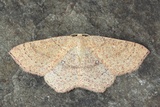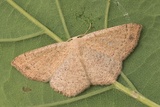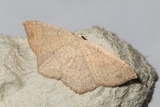Cyclophora ruficiliaria (Herrich-Schäffer, 1855) Species
Last modified: March 21, 2024, 6:11 p.m.
A very rare and local species in Belgium, largely limited to the southern provinces with a stronghold in the Calestienne area where the species is not so rare.
Details
- Classification
- Family: Geometridae > Subfamily: Sterrhinae > Tribus: Cosymbiini > Genus: Cyclophora > Species: Cyclophora ruficiliaria
- Vernacular names
- Geelbruine oogspanner (NL), Jersey Mocha (EN), L'Ephyre Trois-Cerceaux (FR), Braunroter Eichen-Gürtelpuppenspanner (DE)
- First mention in Belgium
- Fologne E. 1859a. Lépidoptères. Catalogue des Phalénidées. Deuxième partie. — Annales de la Société entomologique belge 3: 107–132. On page 125.
- Status
-
Native
Distribution
Imago
Wingspan 22–25 mm. First-generation moths are rather plain in color but are copiously dotted with black and red scales, giving them a freckled appearance. A small pale fiscal spot on each wing, the forewings have a narrow basal line, a distinct darker median line, and a distinct row of subterminal dots which are weakly connected to form a subterminal line. Fringes are distinctly reddish colored.
Caterpillar
The larvae are similar to Cyclophora punctaria, but have smaller and less distinct paler or yellow spots along the sides. Like other species within this genus, there is a light greyish-brown and a bright green form.
Bionomics
Hibernates as pupa.
The moths come readily to light.
Flight periods
They fly in two generations a year and have been observed from mid-April till September, the second generation often less abundant.
Observed on
- Host plant (genera):
- Quercus
The larva is monophagous and can be found on Quercus.
